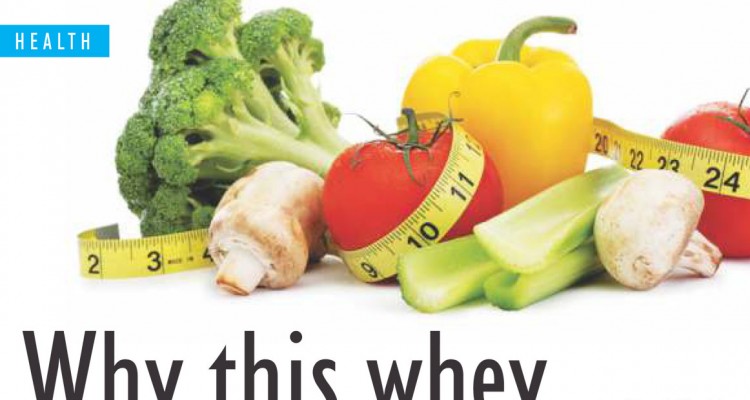The demand for dairy products continues to be high even in urban, and rapidly modernising Lucknow. The result is the establishment of various small scale milk processing units in the district, accompanied by massive production of ‘WHEY’ as by-product.
Whey is a thin and watery by-product obtained after curding of milk. While pressing the coagulated milk, a hard part (casein) and a liquid part (lactoserum) appear. This yellowish green coloured thin transparent liquid is called whey. It is an excellent source of protein, vitamins, minerals and lactose. It contains about 45 percent to 50 percent of total milk solids, 70 percent of milk sugar (lactose), 20 percent of milk proteins, 70 percent to 90 percent of milk minerals and important water soluble vitamins originally present in milk. Whey protein is considered as a complete protein. Nutritional potential of whey is largely being utilized in athletic and weight management activities, as well as for the treatment of heart and kidney diseases, edema, liver dysfunctions and rheumatic disorders. In past few decades nutritional and functional properties of whey have been recognized and whey is now widely used in various products like infant formulas, food supplements, sport bars and beverages to meet a variety of health goals for people of all ages.
Processing of whey into spray dried food products and supplements, however, is a highly cost intensive method. The prohibitively high cost involved in processing is the main reason behind slow progress of the whey processing industry in Lucknow. Majority of whey produced here is still being drained off, in spite of its surplus nutritive values and health benefits. This practice not only incurs loss of valuable nutrients but also creates serious pollution problems. The high organic load of whey due to presence of lactose, fats and proteins makes it a potent nutritive pollutant. It may be noted here that 100 litres of whey has a polluting strength equivalent to the sewage produce by 45 people. It has high biological oxygen demand and is corrosive in nature, due to which the government has promulgated the Environment Protection Act (1986), which makes it obligatory to pre- treat whey before discharging it in inland water or rivers. But, the cost of pre- treatment is also very high and is almost impossible for small scale producers of cheese/paneer/chena /srikhand to pre- treat whey before disposal and thus, they dispose off raw whey into waterways (without any treatment) or around the dairy’s vicinity. This practice creates serious environmental pollution problems including ground water pollution and high organic load on local municipal sewage treatment systems. Till date, this aspect of environmental pollution has not been paid heed to and up to now, no steps have been taken to overcome this situation. Keeping in view the nutritional benefits of whey, there is a dire need to change this dairy industrial by-product into useful palatable form. Besides solving the dumping problem and reducing the environmental pollution, this will also assist in production of value-added food products. The only justified, simplest and most logical way of whey utilization, in the light of above discussion can be deployment of fresh liquid whey in various food preparations at household and commercial level. This practice will not only prevent large scale wastage of whey but will also augment nutritional silhouette of food preparations by adding to its mineral profile. Recipes prepared by toting up whey have found to be especially rich in calcium. The calcium obtained from whey is more bio-available. Increasing calcium intake through whey can prove a cost effective alternative to milk especially for low income group population of the district, which otherwise can hardly afford daily milk intake. Whey being a favour enhancer can be utilized as water replacer in various recipes like soups, batters, gravies, shakes and fermented food products (idli, dosa, uttapam, dhokla). Restaurant owners and caterers can prove a boon in preventing whey from being wasted by utilizing a larger quantity of it per day, in their food preparations. Such efforts would not only protect Lucknow from environmental pollution but also help in fulfilling the dietary calcium needs of pre-teens, teenagers, women and elderly people residing in the district.

